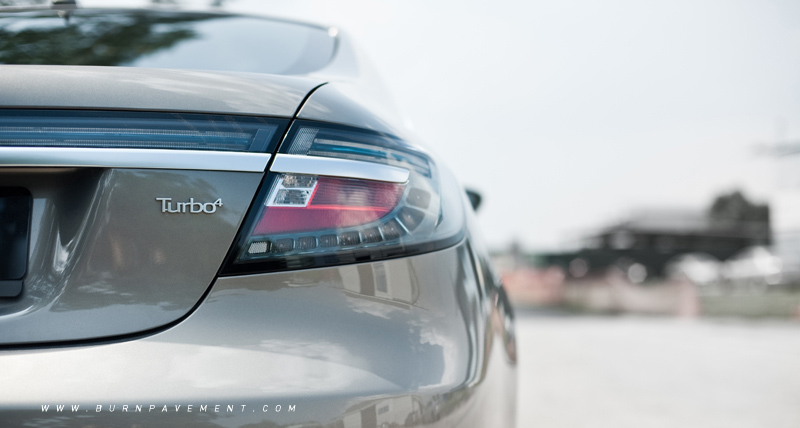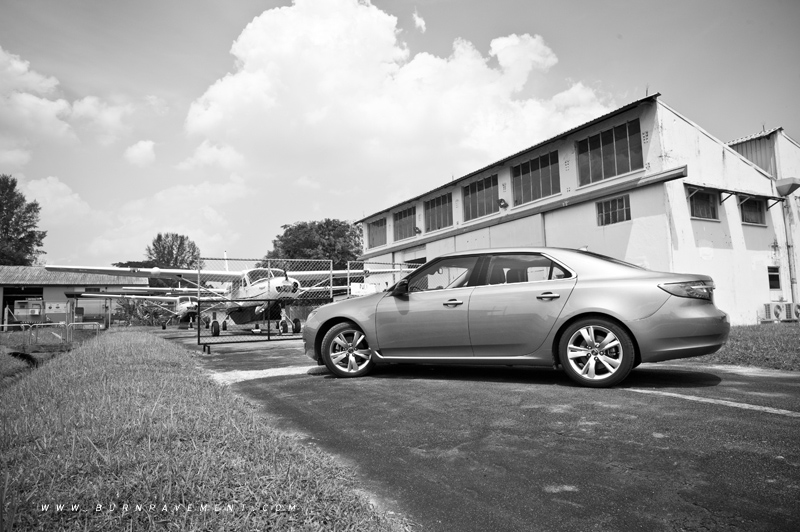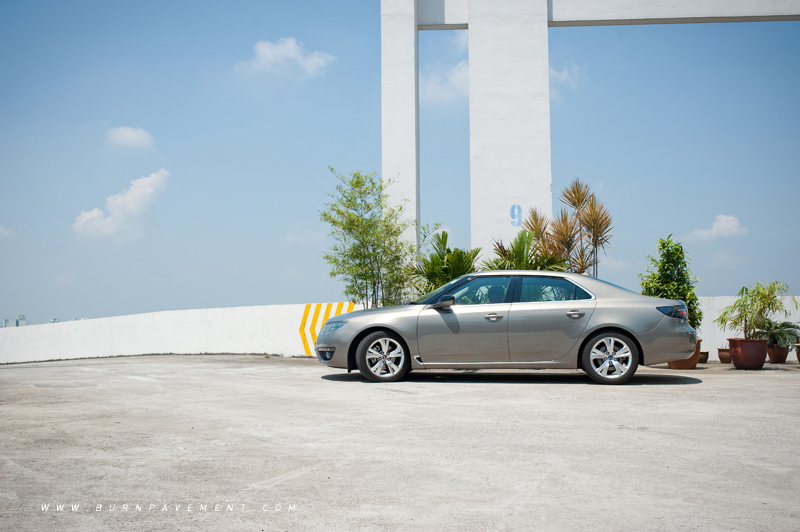The 9-5 is the first model to be introduced after Saab was saved by Dutch sports car manufacturer, Spyker. However, is it Swede, or Dutch?
Photos: Low Fai Ming
The new flagship is available in Singapore in two variants, Vector and Aero. While the Aero has a 2.8L turbo-charged V6 with four-wheel drive, the Vector has a 2.0L turbo in-line four, front-wheel drive.
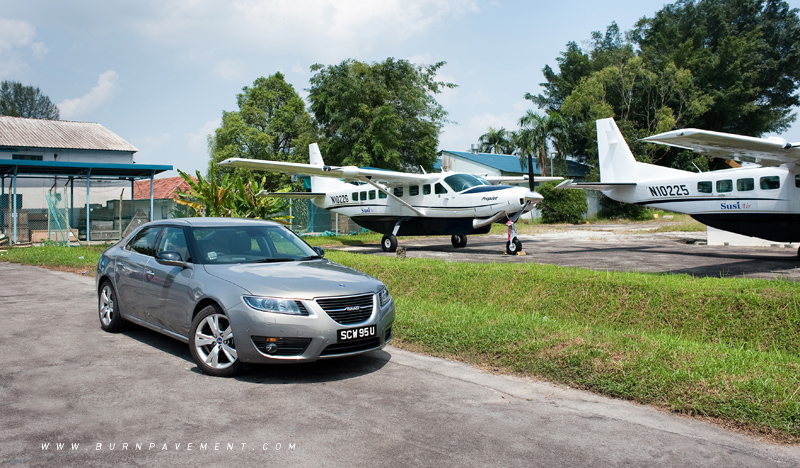
Saab has done a nice job of integrating several Saab trademarks with a modern sleek body. There's no way you'll mistake this for anything else but a Saab, even though it has grown quite considerably in every dimension. Unlike the Saabs of yore, the new fighter comes clad in smooth curves and sleeker, grown-up looks.
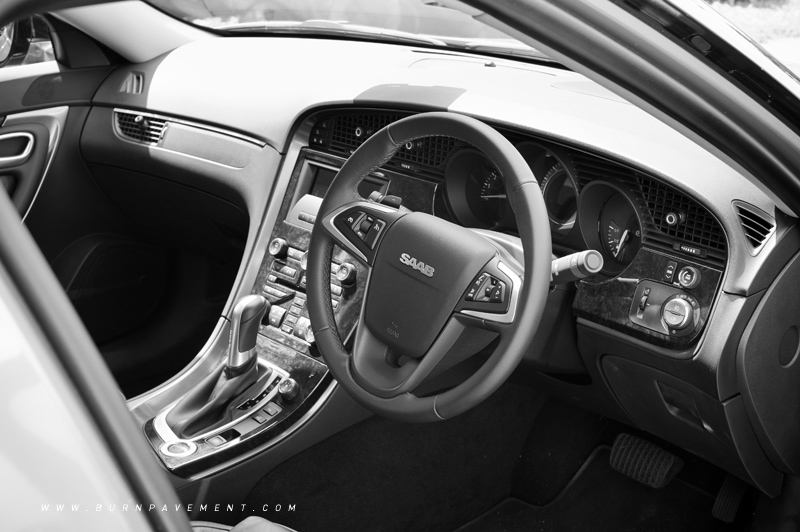
On the inside, you'll feel cocooned behind the wheel thanks to the dash that seems to curve around you. It's quite a dark affair, despite the handful of silver accents around the doors, shifter and chrome-outlined buttons for the climate control and sound system. There's a lot of other buttons that are clearly labelled, but it does give the dashboard a rather cluttered look in the day.
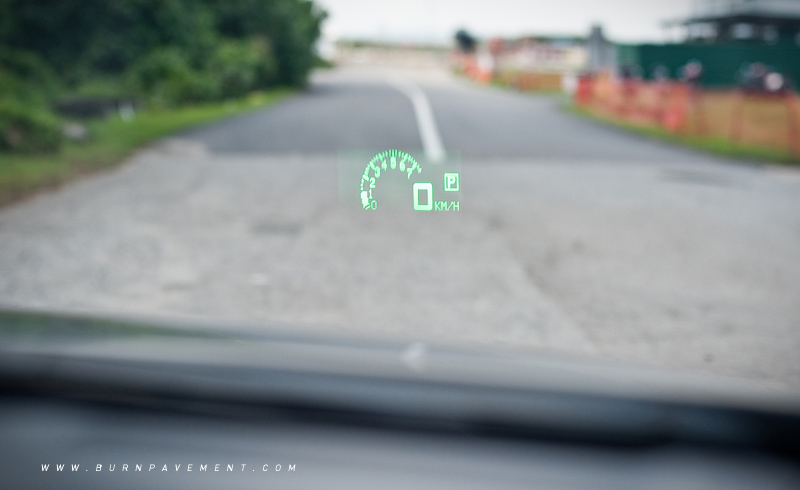
Fire it up with the engine-start button located behind the shift lever and you'll see a green Heads-Up Display (HUD) appear, showing speed or speed and tachometer. It still makes you feel like a pilot, simply because it glows green along with the button array and accompanied with the green backlight of the information screen, which is a refreshing change from the white and blue hues that are found on other similar luxury sedans.
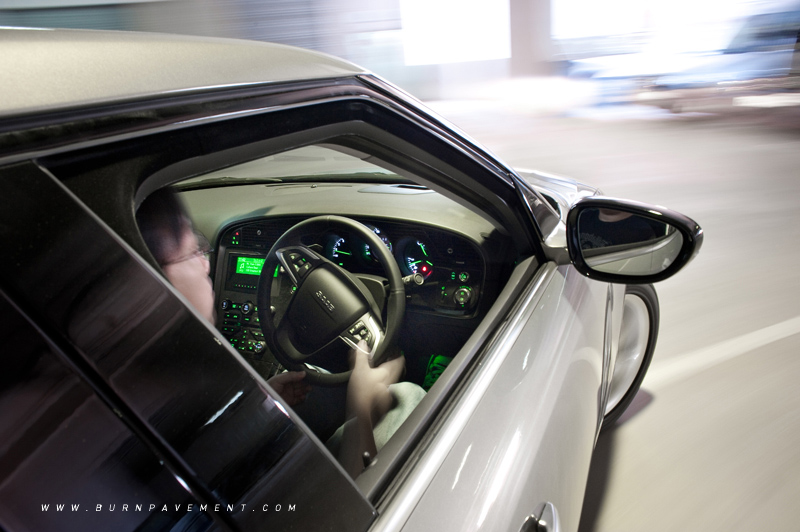
Then there's that intriguing night-panel button, which turns off most of the green glow in two stages. Press the button once and the lights go off, twice and the screen turns off, leaving only the essential dials and the LCD screen on. At the back, there's a good amount of legroom and there's sufficient space for three big adults, though headroom is slightly on the small side. The 515L boot is particularly interesting: It is rather shallow vertically but visually cavernous. There's an adjustable metal divider included too, handy at keeping things from sliding into the depths in a fast stop.

While the interior offers a good amount of space and comfort for five, the fit and finish isn't particularly top-notch, with several elements feeling sub-par such as the flimsy vane adjusters on the retro air outlets and several tacky switches that spoil the executive feel. Spacious it may be, it doesn't exude an air of luxury. Also, thanks to the rather large B-pillars and a high boot line combined with a sloping roof, the rear visibility out of the rear and side windows is rather limited. This car definitely deserves a blind spot indicator, but at least it has sensors all around it to aid in parking.
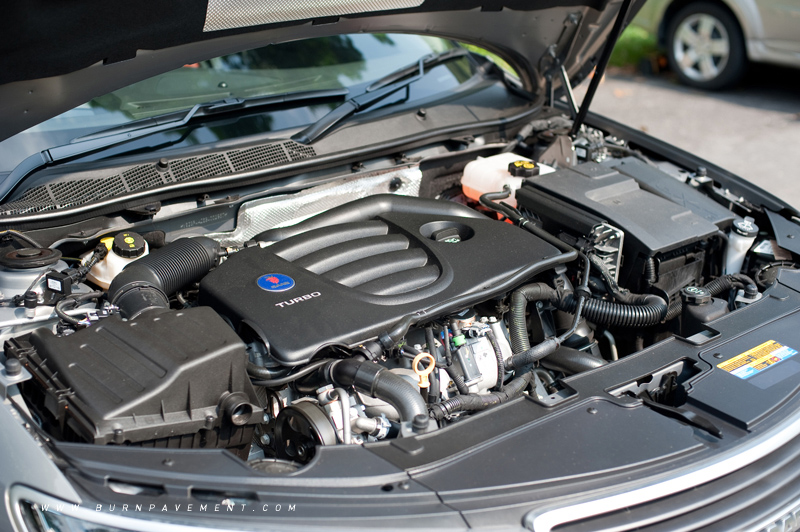
Still, the 9-5 wins favours back in the performance and handling department. While the world slowly moves to turbo-charging for more power, Saab has been doing it since the 1970's. The 2.0L version we tested packs 220bhp and 350Nm of torque that is on tap at 2,500rpm and feels really eager to rev with very good throttle response. The automatic gearbox does spoil the fun a bit, being slow in delivering a kick-down just when we expected it. Acceleration wise, 0-100km/h is completed in 8.5 seconds, with the engine having a very good mid-rev-range grunt that makes highway overtaking easy. The brakes feel very good too, with a very firm feel to the pedal and is more than capable of slowing this car down easily.
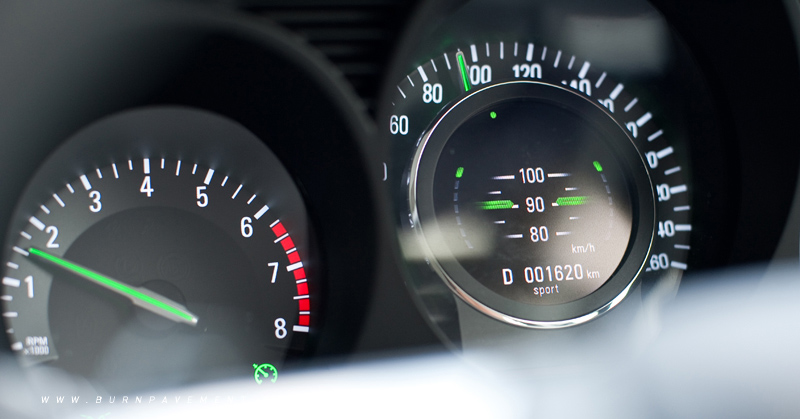
Back to the dashboard, if you're no longer looking at the HUD, there's a jet-inspired digital speedometer that shows your speed in a vertical fashion and other information like distance travelled or fuel consumption. There is also a small dial on the dash that allows you to select the ride quality: Select comfort mode, and it flows nicely over bumps and undulations with a slight hint of firmness. In sport, it can be rather firm but the upshot is that it doesn't roll much in the corners and there's also a slight increase in steering feedback. The intelligent mode wasn't that clever at sensing the road conditions and we preferred setting it manually for most of the time.
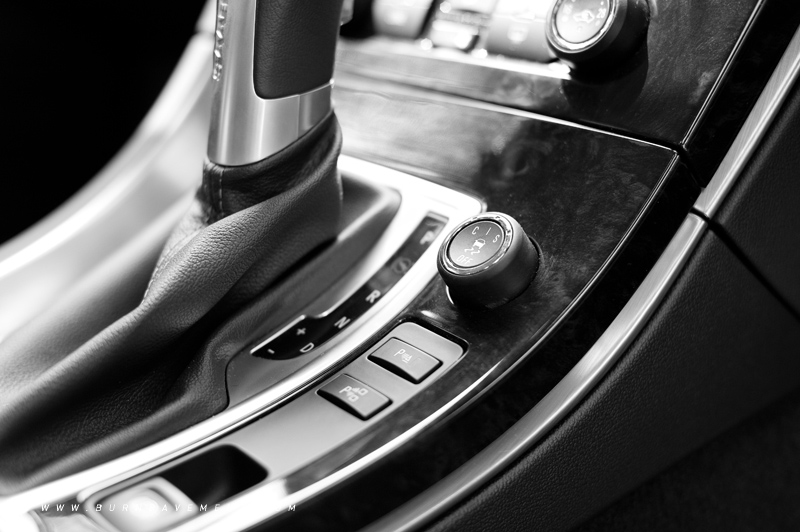
We praise the 9-5 for feeling very calm and sturdy and round the bends, it does give one that sense of assurance as it plants itself down round the bends, but it could do with a bit more feedback from the chassis. Though the car feels stable at all times, can it play street rogue? We tried a wee bit of spirited driving and the 9-5 Vector does prove that it is still in fact a fast executive car that can handle whatever you throw at it, though it does so in a manner that seems all too staid.
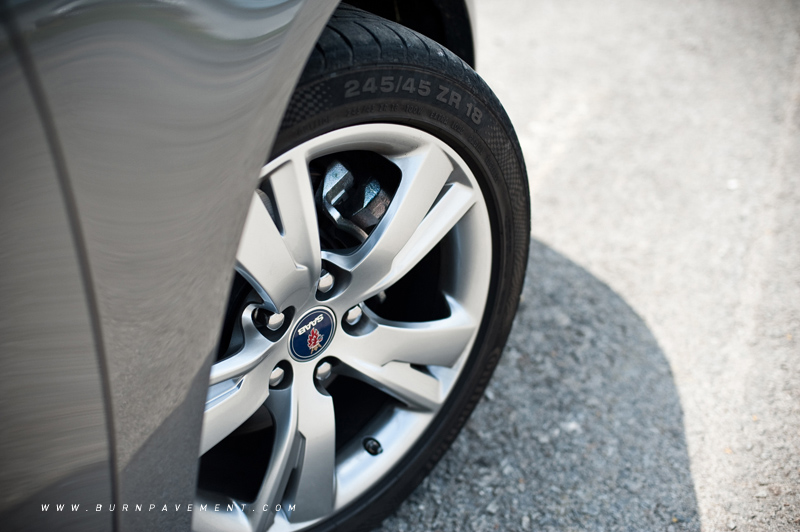
Can the 9-5 be a true German-beater? Based on specifications alone and the drive, it certainly puts up a good fight in winning the market's sentiment in choice. And with the "I'm-in-a-fighter-jet" feel that you can't find elsewhere, the Saab 9-5 Vector does present to us a convincing case. It's a pleasure to whisk from point A to B in this car, and it still has that morsel of aggressiveness when you need to dogfight on the road. In summary, the new 9-5 Vector looks good and offers a lot of room for its occupants which would definitely sway some hearts towards it. Deep down, this Saab is still a Swede at heart. A safe choice? Yes. Special? Very.
